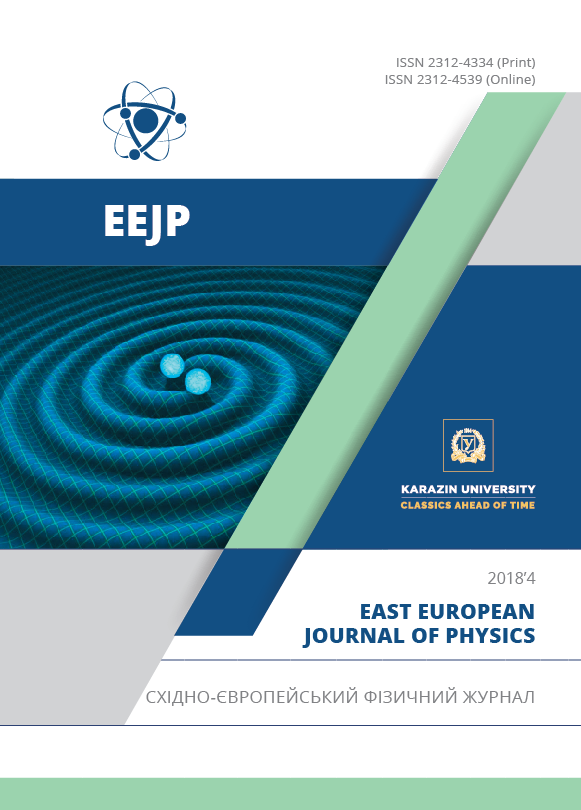Cosmography of the Dynamical Cosmological «Constant»
Abstract
The paper considers a cosmographical approach to analyze cosmological models. Cosmography is a method to describe the kinematics of the cosmological expansion based only on the cosmological principle. We consider a method of treating free parameters of a cosmological model in terms of the directly observable cosmographic values related to the time-derivatives of the Hubble parameter (deceleration, jerk, snap). The method is applied to analyze two cosmological models involving the time-dependence of the cosmological constant in the form Λ(t)→Λ(H) when this approach is especially efficient. Both models interpret the dark energy in the form of the cosmological constant as energy of physical vacuum, which is currently the most supported treatment. The first one means being proportional to the Hubble parameter, and the second one involves a constant and a quadratic term. As a result, the free parameters of both models are expressed in terms of the currently observed values of the Hubble parameter, deceleration, and jerk. The obtained expressions for model parameters are exact, as the method does not involve any additional assumptions. Furthermore, it leads to deal with algebraic equations instead of differential ones. After this procedure, solutions of the evolution equations are obtained in the form of the time-dependence of the Hubble parameter. The obtained model parameters are substituted to the solutions, which are analyzed for a typical range of cosmographic scalars taken from recent observations. Finally, the proposed approach is used to eliminate free parameters from both models and to obtain constraints for the directly observable cosmographic values that can be tested to correspond to present observations data. For the considered cases, such constraints are received respectively for the jerk and the snap parameters with respect to the deceleration. The constraint for the linear model is compared with current observational value ranges for the deceleration and the jerk parameters.
Downloads
References
S. Dodelson, Modern cosmology, 4nd ed. (San Diego, CA: Academic Press, 2008). ISBN 978-012219141.
P.A.R. Ade et al., arXiv:1303.5076 [astro-ph.CO].
P.J.E. Peebles, Principles of Physical Cosmology (Princeton University Press, 1993).
H.E.S. Velten, R.F. vom Marttens and W. Zimdahl, Eur. Phys. J. C, 74, 3160 (2014).
Yu. L. Bolotin, D.A. Yerohin and O.A. Lemets, Physics-Uspekhi, 182(9), 941-986 (2012). (in Russian)
Yu. L. Bolotin, L. G. Zazunov, M. I. Konchatnyi, and O. A. Lemets, Odessa Astronomical Publications. 30, 13-15 (2017).
S. Carneiro, M.A. Dantas, C. Pigozzo, and J.S. Alcaniz, Phys. Rev. D. 77, 083504 (2008).
M. Szydłowski, Phys. Rev. D. 91, 123538 (2015).
S. Coleman, Phys. Rev. D. 15(10), 2929-2936 (1977).
C.G. Callan, S. Coleman, Phys. Rev. D. 16(6), 1762-1768 (1977).
S. Coleman, F. De Luccia, Phys. Rev. D. 21(12), 3305 -3315 (1980) .
S. Weinberg, Gravitation and Cosmology (Wiley, Chichester, 1972). ISBN 0471925675.
A. Sandage, Astrophysical Journal. 136(2), 319-333 (1962).
M. Visser, arXiv:gr-qc/0411131.
M. Dunajski, G.W. Gibbons, DAMTP. 58 (2008).
C. Heneka, MNRAS. (2018).
A.G. Riess, A.V. Filippenko, P. Challis, A. Clocchiatti, A. Diercks, P.M. Garnavich, R.L. Gilliland, C.J. Hogan, S. Jha and R.P. Kirshner, The Astronomical Journal. 116(3), 1009 (1998).
A. Al Mamon and S. Das, Eur. Phys. J. C. 77, 495 (2017).
Copyright (c) 2018 EEJP, Oryna Ivashtenko

This work is licensed under a Creative Commons Attribution 4.0 International License.
Authors who publish with this journal agree to the following terms:
- Authors retain copyright and grant the journal right of first publication with the work simultaneously licensed under a Creative Commons Attribution License that allows others to share the work with an acknowledgment of the work's authorship and initial publication in this journal.
- Authors are able to enter into separate, additional contractual arrangements for the non-exclusive distribution of the journal's published version of the work (e.g., post it to an institutional repository or publish it in a book), with an acknowledgment of its initial publication in this journal.
- Authors are permitted and encouraged to post their work online (e.g., in institutional repositories or on their website) prior to and during the submission process, as it can lead to productive exchanges, as well as earlier and greater citation of published work (See The Effect of Open Access).








